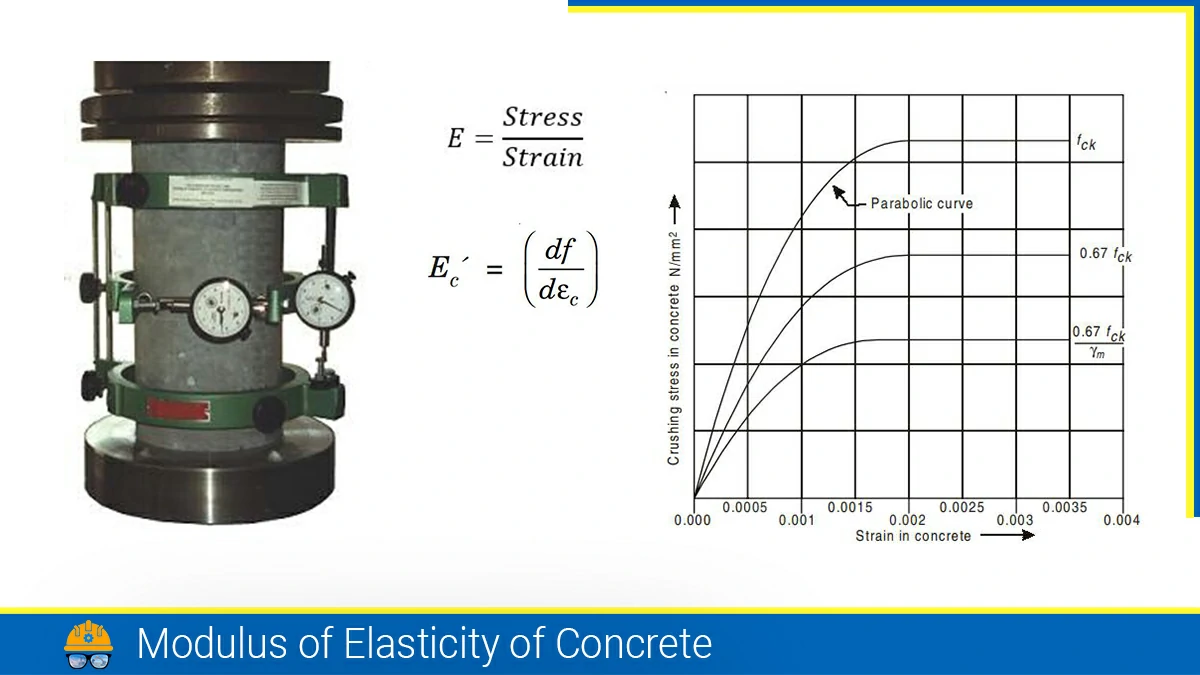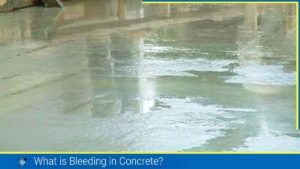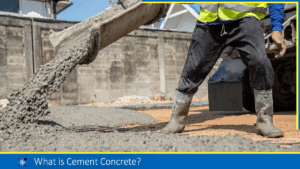Ever wonder about the quantity of concrete poured to build the Dam, bridge pier, mat foundation, or other massive structures? Those structures are constructed with an enormous quantity of concrete. This concreting technology is called mass concrete.
Traditionally, mass concrete referred to the construction of dams, bridge piers, and other massive structures which is cast with a huge quantity of concrete. But now the concept of mass concrete has changed over time. So keep reading about mass concrete to know more about its applications, advantages, and disadvantages.
What is Mass Concrete?
Mass concrete is a term used to define the volume of cement concrete to that of its dimension. The term first came into existence when the construction of a structure with massive quantities of concrete members compared to their strength was carried out in early 1850. Historically, massive concrete structures were constructed with weak concrete of enormous size when concrete technology was still developing.
Mass concrete and massive concrete are synonyms for each other and both refer to the same type of concrete structure. Due to a greater section of the member, the heat generated is very high because of the hydration of the concrete. However, the terms are differently used by the different institutes. Mass concrete is popularly used by the American Concrete Institute committee.
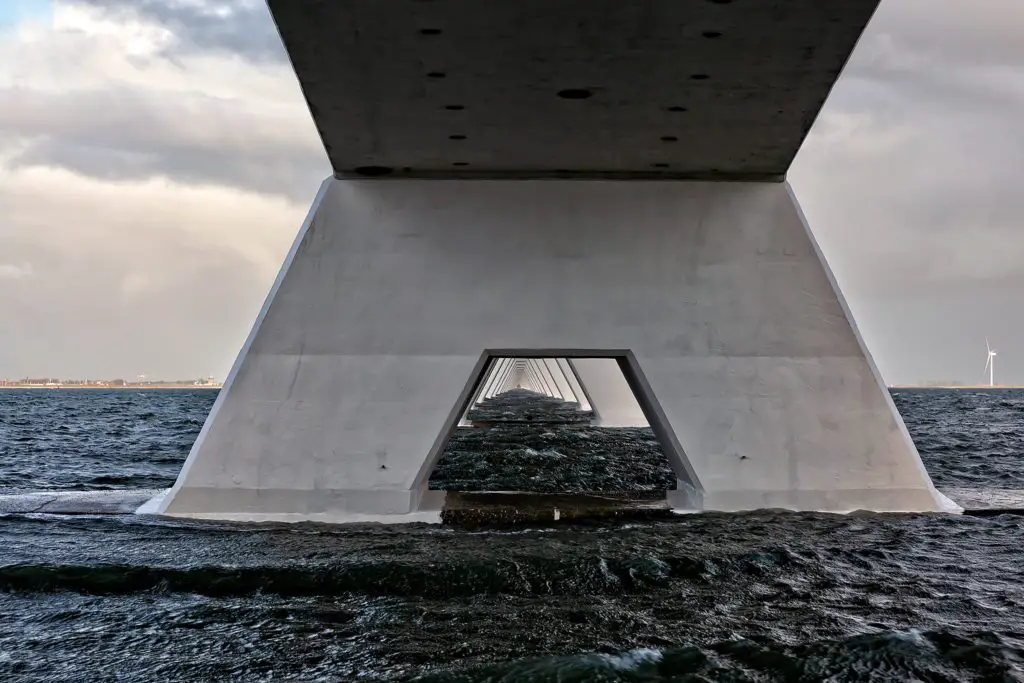
Definition of Mass Concrete.
Definition by America Concrete Institute Committee 207: –
“any volume of concrete in which a combination of dimensions of the member being cast, the boundary conditions can lead to undesirable thermal stresses, cracking, deleterious chemical reactions, or reduction in the long-term strength as a result of elevated concrete temperature due to heat from hydration.” –ACI Concrete Terminology
Properties of Mass Concrete
It is essential to know the properties and behaviour of the concrete before its application and usage in any type of construction. The following are the properties of mass concrete and it is always recommended to check the properties of concrete. The mix design must be conducted before the execution of the concrete works:
Also, read: What Is Concrete Mix Design?
Strength of Mass Concrete: –
When it comes to the strength of the mass concrete, it does not require higher compressive strength, unlike other concrete works. This is because there is a large area of concrete to carry the applied stresses. Thus, this type of concrete is used in the structure where the strength of the concrete is not demanded.
Optimal Mix Design of Mass Concrete: –
The design mix of the mass concrete is an important component while preparing the concrete. This is to prevent shrinkage, creeping, and cracking in the concrete components. The mix design of concrete is 1: n: 2n. The factors governing the design mix of the concrete are as follows: –
- Achievement of compressive strength after 50 to 90days
- Using low-heat cement. Type II cement generally has the lowest heat of hydration
- Low compressive strength
- Adding Ground Granulated Blast Furnace Slag (GGBFS) and Fly ash
Permeability Of Concrete: –
For the construction of dams, impervious concrete is demanded. Such a type of concrete is achieved by reducing the porosity of concrete. Thus, the porosity can be controlled by the following factors.
- Adjust the water-cement ratio while being in line with the mix design requirements.
- Carrying out adequate compaction of concrete
- Adequate curing
- Properties of cement – select a suitable cement type
- Use of admixtures
- Types of aggregate used
Thermal Control Measures
This type of concrete undergoes an exothermal reaction emitting elevated temperature and temperature differences between the surface and the core due to the volume of the structure. This phenomenon has to be controlled during the placement of concrete. The process of controlling the high temperature and temperature difference is known as “Thermal control.”
Some of the techniques for thermal controls currently in use are optimal concrete mix design, insulation, concrete cooling before placement, concrete cooling after placement, and smaller placements. These methods of thermal control have associated costs and benefits.
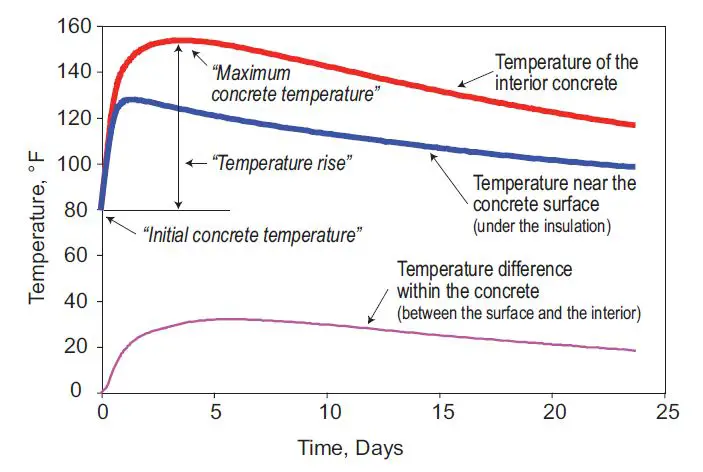
Materials for Mass Concrete
The materials for preparing mass concrete are the same as ordinary concrete. However, some additional materials are used and the preparation method requires extra care. Cement and aggregates are the primary components for preparing mass concrete in the presence of water.
Low-Heat Cement: –
Because of using low-heat cement, the temperature and temperature difference can be reduced. As per Indian Standard Specification, the heat of hydration of low-heat cement shall not be more than 65 calories per gram for 7 days and 75 calories per gram for 28 Days.
Cement Recommendation by ACI: –
However, the use of cement is not limited to low-heat cement. In the current concept of mass cement, Portland cement (ASTM C150), blended cement (ASTM C595), and hydraulic cement (ASTM C 1157) are some of the recommended cement by ACI 207.2R and ACI 207.4R.
Type II (medium Heat cement) and type IV (Low Heat cement) may be used for mass concrete and massive concrete structures respectively according to ACI 207. 2 recommendation.
Also, read: Portland Cement: Properties, Composition, Manufacturing Types And Uses
Chemical Admixtures for Mass Concrete: –
Chemical Admixtures can reduce heat generated in the mass concrete during hardening, increasing strength, lowering cement content, increasing durability, decreasing permeability, and improving abrasion or erosion resistance.
The chemical admixtures important to mass concrete are classified as air-entraining, water-reducing, or set-controlling. The detail of admixture for mass concrete is given in ACI 212. 3R.
Aggregates: –
Fine and coarse aggregate shall comply with ASTM C 125 and ACI 221R. Fine aggregate should consist of hard, dense, durable, uncoated particles. Fine aggregate should not contain harmful amounts of clay, silt, dust, mica, organic matter, or other impurities to such an extent that, separately or together, they render it impossible to attain the required properties of concrete when using normal proportions of the ingredients.
Coarse aggregate should consist of hard, dense, durable, uncoated particles. Rock that is friable or tends to degrade
during processing, transporting, or storage should be avoided. The recommended size is 75mm maximum and 37.5mm minimum.
Water: – Water that is fit for drinking is generally acceptable for mixing the concrete. Water-containing materials that significantly affect the hydration reactions of Portland cement should not be used.
Application of Mass Concrete
The following structure prefers this type of concrete: –
Construction of Dams: The construction of dams requires an enormous concrete wall section. Therefore, mass concrete can be used for dam construction works without the use of a reinforcement bar. Hoover Dam constructed in 1933 is such kind of dam.
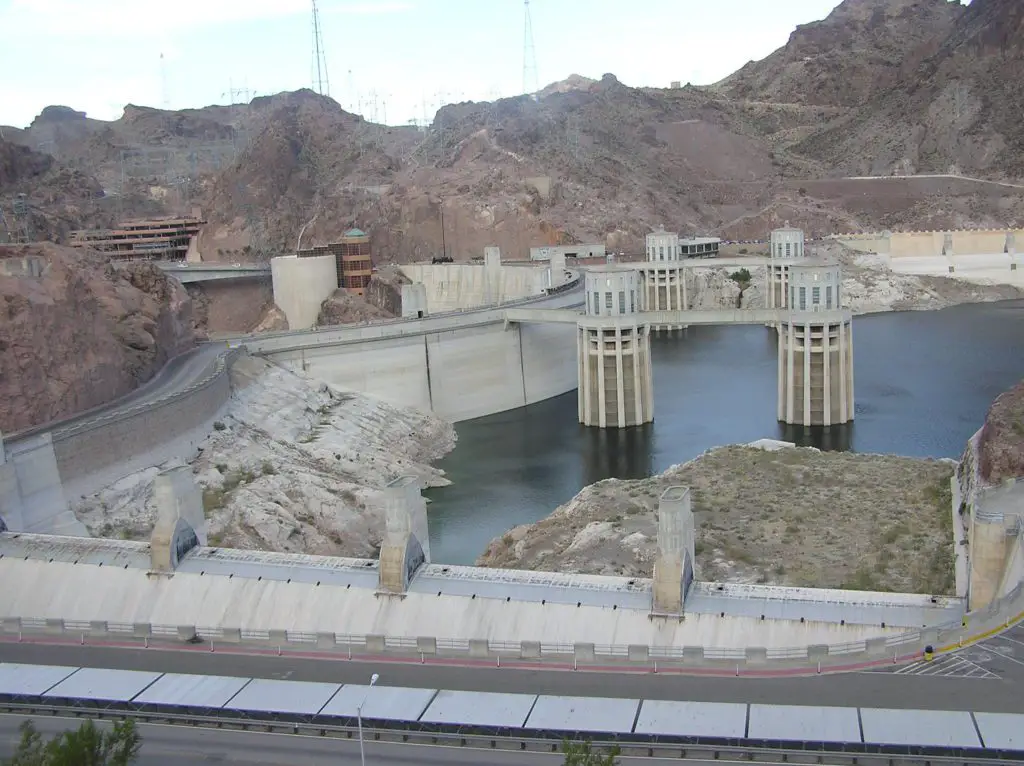
Retaining Walls Construction: Retaining walls are constructed with varying structural stability and sectional area. Gravity retaining walls with concrete are examples of mass concrete structures.
Rigid Pavement: Rigid pavements are some examples of mass concrete usage. Concrete is laid as a pavement material for larger volumes.
Also, read: What Is Rigid Pavement? | 4 Types Of Rigid Pavement
Advantages of Mass Concrete
- They are used to construct huge sections of walls where steel reinforcement is not available.
- Construction is rapid and fast in terms of concrete works.
Disadvantages of Mass Concrete
- The structure is susceptible to the development of cracks due to non-tensile strength.
- It requires a large quantity of cement and aggregate to prepare the concrete.
- Emission of elevated concrete temperature due to heat from hydration.
- Deteriorate the strength of concrete over time.
FAQs:
Q: What is the specification of mass concrete?
Ans: Some of the specifications of mass concrete are as follows: –
1. Limits the maximum temperature to 160°F and the maximum temperature difference to 36°F.
2. Requires the calculations or a thermal control plan
3. Demands mix design specifications
Q: What type of cement is used for mass concrete?
Ans: Portland cement (ASTM C150), blended cement (ASTM C595), and hydraulic cement (ASTM C 1157) are some of the recommended cement by ACI 207.2R and ACI 207.4R.
![]()





